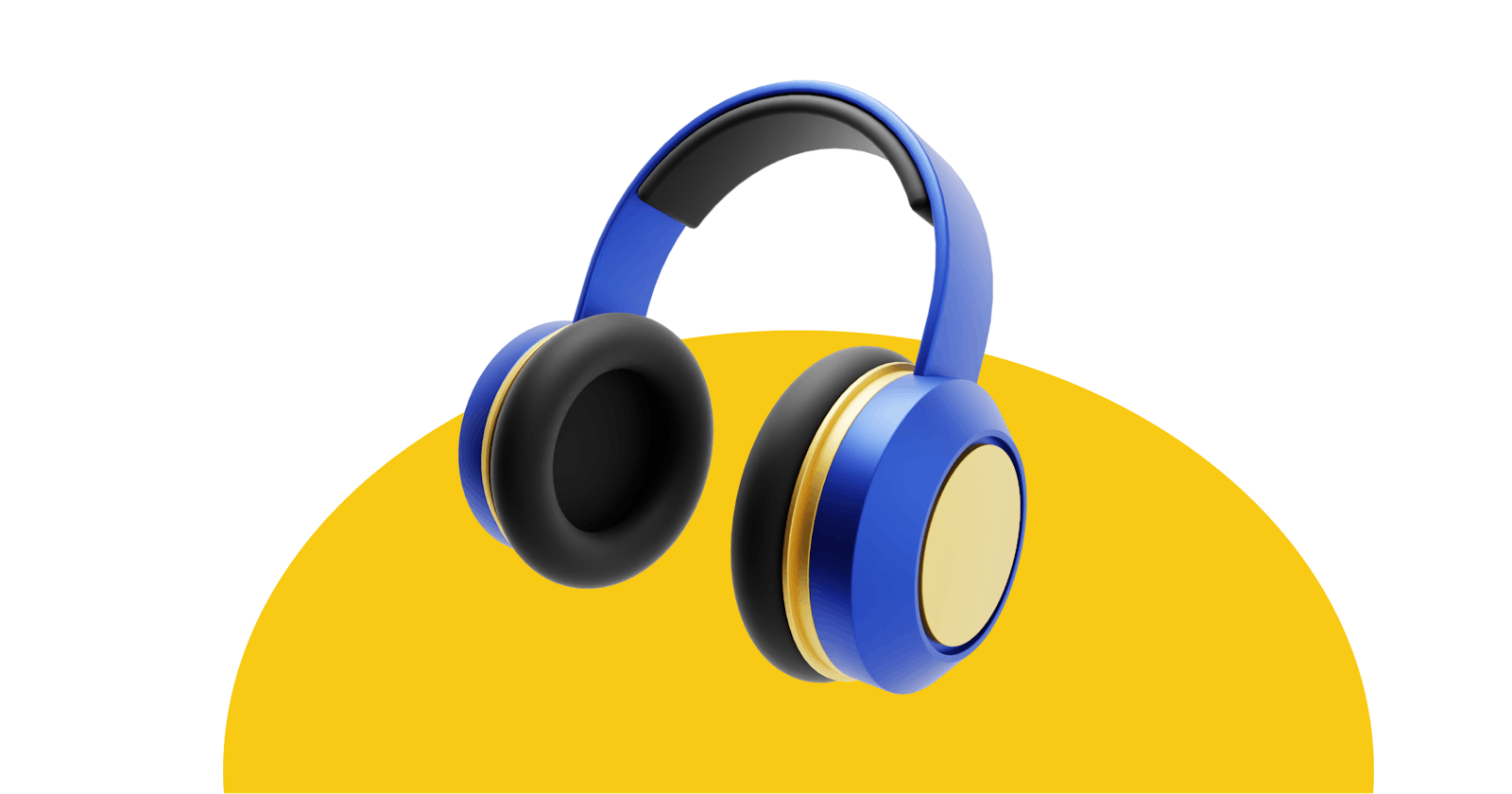Big names such as grimes, 3LAU, and Steve Aoki are leaders within the NFT music industry and are well known among NFT creators.
They have capitalized on this new industry to pocket millions of dollars for themselves and their supporters.

Non-Fungible Tokens (NFTs) are generally seen as pictures or videos.
That is a misconception that we will uncover in this article by exploring the NFT music industry.
We will explore why people support music artists by purchasing their NFTs with cryptocurrencies.
NFTs are revolutionizing the power of ownership for the average person.
It allows the typical person to financially support music artists.
The current system only allows the record labels to reap the financial gain when a music artist becomes successful, sometimes exploiting the music artist too.
NFTs can result in a win-win for both the music artist and the listener.🎉

What is an NFT, and what does NFT stand for?🖼️
NFT stands for Non-Fungible Token.
An NFT is a digital file that lives on the blockchain. Once it is on the blockchain, it can not be removed.
The idea of an NFT existing on the blockchain means that it can not be changed, and it is easy to identify the current and previous owners of an NFT.
An easy way to understand NFTs is to compare them to a fungible token.
A fungible token is a token that retains the same value compared to another token that originates from the same contract.
Cryptocurrencies are an example of a fungible token. One Bitcoin is worth $40,000, and another is worth $40,000.
- Bitcoin #120 - $40,000
- Bitcoin #121 - $40,000
A fungible token is the same value as we can see above, regardless of the issuance number (#120). This is because the Bitcoins originated from the same smart contract, and they have the same value of $40,000.
A Non-Fungible Token is the opposite of a fungible token.
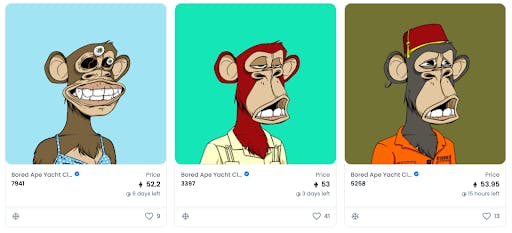
Bored Ape Yacht Club (BAYC) is an NFT originating from the same contract, but they each have different issuance numbers and will look different. You can see each BAYC has a different value.
- BAYC #7941 - 52.2 ETH
- BAYC #3397 - 53 ETH
Even though they come from the same smart contract, each NFT is provided with a unique tokenid. The tokenid helps differentiate NFTs, and each retains a different value.
Owners possess NFTs, and it is easy to check who owns which NFT by using websites such as OpenSea, Rarible, or Etherscan.
Someone can save your NFT as a jpeg or png and print it out if they want. They still do not possess complete ownership over that NFT, as we can verify who owns it by checking the public blockchain.
Why are musicians getting involved with NFTs?🎵
Digital music has been a rising trend since it was released. The use of CDs has declined dramatically, especially after the release of music streaming services such as Spotify or Apple Music.
Musicians now stream most of their music on these services. However, music artists are unfairly paid. The revenue percentage from music streaming has been an issue for years, with artists getting paid around 15% per stream.😔
“Even if I upload the full version of the contained song to DSPs worldwide (which I can still do), I would never get even close to $10k, after fees by DSPs, label, marketing, etc.,” Linkin Park’s Mike Shinoda, who raised around $11,000 for his first NFT, recently tweeted.
Music artists create music for a living, but this discrepancy within their wages creates a financial struggle for music artists who may have to work multiple jobs to afford their living costs.
Before the pandemic, most music artists would have to go on tour to break even or profit, as streaming revenue is not much. So where is the money?💰
Streaming services hoard the money, and they make claims that it goes on marketing and such, etc. Streaming services such as Spotify are loved by their users, but music creators must also be compensated fairly for their work.

This is where NFTs enter to provide a new and improved source of income for NFT music artists.
NFTs within the music industry provide multiple innovations.
The potential of NFTs in the music industry💡
Now that we understand how labels and streaming services mistreat music artists, how do NFTs help here?
NFTs created by NFT music artists could be utilized in various ways shown below.
Crowdfunding a music artist 🎵
Enter Opulous. Opulous is the first platform to offer music NFTs are Security NFTs (S-NFTs). NFT music artists can mint and sell their music NFTs for an upfront cost.
In this case, you could purchase an S-NFT of Lil Pump and Soulja boy’s song for $100 per security. You could invest up to 50k, and in return, you share in the royalties and more.
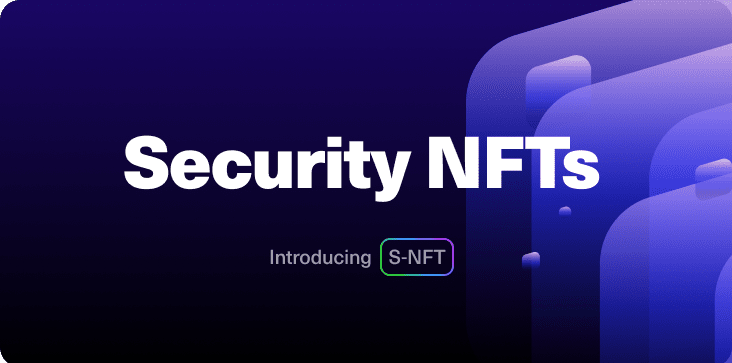
'The Security Non-Fungible Token (S-NFT) is the first of its kind that combines the power of NFT technology and an innovative investing framework.'
'This new way of investing allows you to receive rights to the royalties through a limited edition NFT representation. There are only x tokens available, and there will never be more produced.’
In this case, 5,000 NFTs of the Lil Pump S-NFT were sold. This provides a more stable return for the NFT music artist, and in this case, $500,000 was raised.
The revenue from the S-NFT includes the streaming revenue and other royalties when the track is played in an advert on TV or within a game. The picture below shows the different ways revenue will be collected and distributed from the S-NFT.
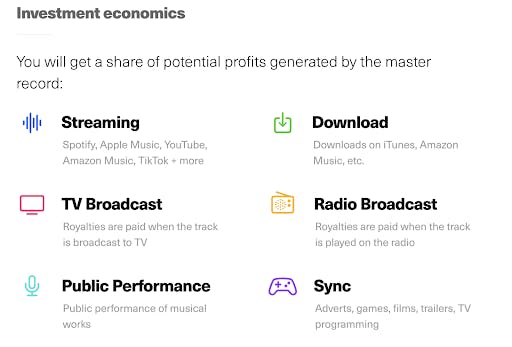
Social media platforms such as TikTok and Instagram can make a song famous, which has been a common theme throughout TikTok and has caused music artists to rise in popularity. The streaming revenue payout is generally low; it doesn’t reward the music artists fairly.
S-NFTs will be able to provide a more stable income for artists, but also, if a song gets very popular, this could lead to a significant financial gain.
Decentralized streaming platforms🔉
Audius is a new decentralized music streaming platform with inbuilt social media features. It works similar to Soundcloud but runs on the blockchain with its own token $AUDIO.
d
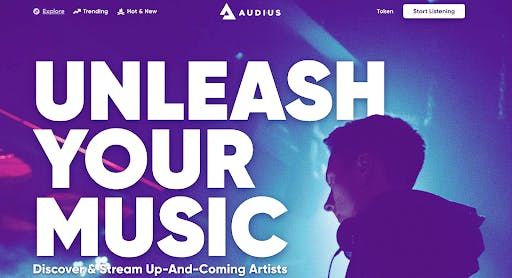
Audius aims to provide more control to the music artists over their music and control how their music will be monetized compared to the current options such as Spotify and Apple Music.
Artists will upload their tracks to the Audius website, where they will live on their blockchain and be immutable. There is no vetting process, and it is simple for anyone to sign up and upload a song.
Users will listen to the music for free, with both the creators and users earning the $AUDIO token.🤑
The $AUDIO token will act as a governance token so people can vote for the changes they want to make for Audius or submit an improvement proposal.
Around 100,000 artists on Audius include famous artists such as Skrillex, deadmau5, Russ, Mike Shinoda, Diplo, and Disclosure, etc. These artists have recognized the power of Audius and have been using the platform as a way to experiment with unreleased pieces and mixes.
In August 2021, Audius was selected to partner with TikTok’s Sound kit functionality to help bring songs from Audius onto TikTok. A majority of TikTok users say that they use the app to discover new music.
Sell your concert tickets without the worry of scalpers.🤑
The GET protocol allows you to sell your concert tickets to customers on the blockchain without the worry of scalpers.
All tickets are programmed on the blockchain. Each ticket is created as an NFT, and the seller can set the rules to ensure the primary ticket cost and the secondary sale costs.
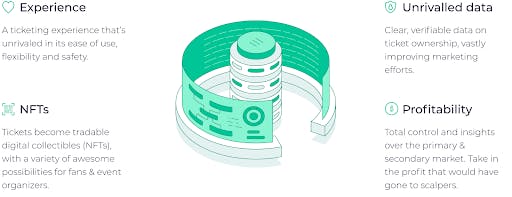
I have explained the rules below with an example:
Primary ticket cost of a Drake concert: $50
Secondary ticket cost of a Drake concert (without GET Protocol): Any price, but most likely >$50.
Since a Drake concert is a popular concert, people are most likely to sell these tickets for $100+. This is where ticket scalpers come in.
Ticket scalpers are people who buy tickets intending to resell them for a profit, which is unfair for fans who will have to pay a premium price.
Secondary ticket cost of a Drake concert (with GET Protocol): $50 (Pre-determined price)
This means any tickets sold on the secondary market can only be sold at $50, which means no profit for ticket scalpers, and instead, only Drake fans will buy the ticket.
The only reason to sell the ticket now, is if you cannot attend the concert or no longer want to go, etc.
This means that music artists will sell their concert tickets to fans and not the ticket scalpers who profit from fans. This creates a more genuine experience for both the music artists and the fans.
Music artists don’t profit from secondary sales and do not like to see their fans paying a premium price for tickets. GET protocol provides the solution to answer those problems.
Sell your digital music as an NFT.🖼️
Music is always being used without providing credit to the original creator, and it can be hard to verify the original creator.
Selling your songs as an NFT means that everyone can verify when the song was created and uploaded on the blockchain and who the original creator is.
Sound XYZ is a platform specifically tailored for music artists to sell their songs to users, and in doing so, users have the chance to own a limited edition NFT of the song.

You can also sell NFT songs on OpenSea, as most digital files such as mp4’s can be sold on OpenSea.
You will have to cover the marketing yourself if you upload on OpenSea, as there are so many NFTs that with no marketing, your NFT can get lost within the website.
Example of musicians adopting NFTs📜
3LAU is one of the most prominent music artists in the blockchain scene. 3LAU sold an NFT of his ultraviolet album in March 2021 for around $11 million over 3 days. He also sold his latest single “ Worst Case” as an NFT that pays 50% of the streaming revenue to the 333 holders of the NFT.
3LAU has also created his own music NFT platform, Royal. His single “Worst Case” aims to showcase the power of Royal and show that people can invest in artists and reep the streaming revenue.
This is very similar to Opulous.
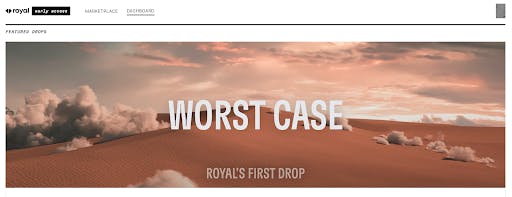
3LAU mentioned that since he announced Royal, around 2,000 music artists have enquired about joining the platform, with 200 of them having>500,000 monthly listeners and a few with >20,000,000+ streams.
Grimes has also amassed around $5.8 million from a collection of NFT artworks sold through NiftyGateway in 20 minutes. Some of the NFTs were accompanied by original songs but were mainly artwork.
On March 5th, Kings of Leon sold their latest album as an NFT, “When you see yourself”. They released their album on the same day as the NFT through the Yellow Heart platform, where they made around $1.5 million in revenue.
The Wu-tang clan spent over six years on the album “Once Upon a Time in Shaolin.” Three years later, the government seized the album by its original owner “Martin Shkreli. PleasrDAO bought the only copy of the album “Once Upon a Time in Shaolin” for 4 million dollars earlier this year.
Many popular music artists such as Michael Buble and Cardi B have adopted a Genie for themselves, an NFT avatar that they can use within the metaverse to connect with their fans or perform concerts.
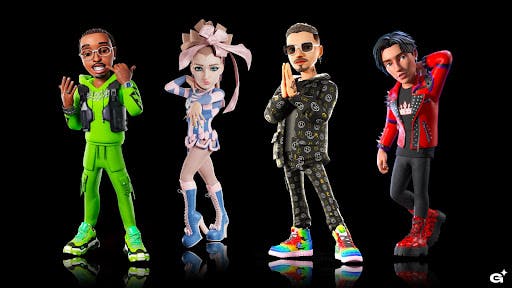
Conclusion
Music NFTs are only getting started, especially with platforms such as Opulous and Audius.
These companies are only in their infant stage and haven’t reached mass audiences, and once the process is easier to use these products, more people will have access to them.
The metaverse will provide a new experience for music artists in digital concerts and digital tickets.
Only time will tell how these play out, but I believe this is the start of the music industry changing for the better.
For both music artists and fans.
If you want to learn more about NFTs, Crypto, blockchain and other web3 topics, I wholeheartedly recommend checking out the Hashnode web3 blog where this article is hosted.

